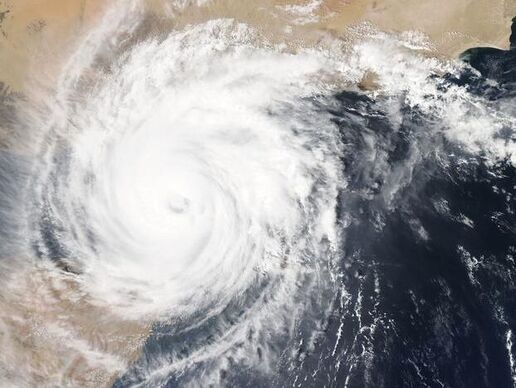|
By Lauren Koenig The 2020 hurricane season has seen a record number of named storms brew over the Atlantic and the most intense tropical cyclone in history to hit the Philippines. With the hurricane season still not over, new meteorological disasters on top of an unremitting pandemic add up to a perfect storm in an already overwhelming year of events. But hurricane seasons like 2020 may become the norm due to global climate change and scientists are working to understand how it contributes to trends in the frequency and intensity of tropical cyclones. Other scientists, are working to understand how societies can manage these risks. New research published in the journal PNAS found that when tropical cyclones strike regional areas with strong, local public services and countries with more effective national governments, they result in fewer deaths, even when taking into account average income and socioeconomic status. This is the first time scientists have been able to disentangle the physical effects of a hurricane from the economic factors that determine how an area will cope during a tropical cyclone disaster. National and Local Data The study's authors, Elizabeth Tennant and Elisabeth A. Gilmore, looked at cyclone data from over 1,000 tropical cyclone disasters that took place from 1979-2016, making it one of the most comprehensive studies to date. During those years, more than 418,000 people from 85 countries lost their lives to tropical cyclones. To gauge government effectiveness, Tennant and Gilmore used data from the World Governance Indicators project, which capture the quality of public policies and government service delivery. “We were able to look at each storm and determine how intense it was and how many people were exposed,” said Tennant, lead author of the study and a postdoctoral associate at Cornell. Adding in government effectiveness and socioeconomic data then creates a “clearer picture of the relationships between a place, its characteristics, and the outcomes from a disaster event,” said Tennant. Most hurricane research has taken a bird’s eye view when it comes to investigating the effects of hurricanes at the national level. A tropical cyclone, however, is only considered destructive when it coincides with areas where people live. For that reason, Tennant and Gilmore pursued a more nuanced investigation into the quality of local institutions that contribute to hurricane survival. The researchers scored regional vulnerability to hurricanes based on an area’s infant mortality data, which reflects the availability of healthcare and other social safety nets that people rely on to provide help during a natural disaster. If a hurricane hits a community with depleted resources, the consequences will be far worse than if its hits another location that’s more prepared, even within the same country. While this conclusion is intuitive, setting up a model to address this type of variation may help both scientists and governments alike precisely target areas that need shoring up. “Good data and models are essential for studying a wide range of natural hazards, including extreme events, which we expect to increase in frequency and severity under climate change,” said Tennant. Risk Preparation While this study doesn’t evaluate any particular policies, it does show that when people think about hurricanes, they need to also think about the governments and institutions in power and their approach to tropical cyclone risk. “One of the reasons why we looked at governance and average income, as opposed to hazard-specific features such as the number of cyclone shelters, is because we are interested in the foundational characteristics that help societies adapt to these hazards,” said Tennant. Many people feel barraged and exhausted by the past few months, but it seems unlikely that the entangled nature of modern crises will simplify anytime soon. Science-backed data that supports building the capacity of institutions and governments in this realm may help prepare for similar shocks and stress events, said Tennant. “This is particularly important in this evolving landscape of risk under climate change, globalization, and public health crises.”
|
Archives
February 2023
DiscovHER BlogScientista DiscovHER is a blog dedicated to discovHERies made by women in science. Follow us for links to the latest resHERch! Categories
All Alexandra Brumberg Amy Chan Avneet Soin Chemistry Diana Crow Engineering Health/medicine Indulekha Karunakaran Iqra Naveed Johanna Weker Lidiya Angelova Michael Clausen Mind Brain And Behavior Muhammad Hamza Waseem Nikarika Vattikonda Opinion Prishita Maheshwari-Aplin Technology Uma Chandrasekaran |
The Network for Pre-Professional Women in Science and Engineering
The Scientista Foundation is a registered 501(c)(3) -- Donate!



 RSS Feed
RSS Feed